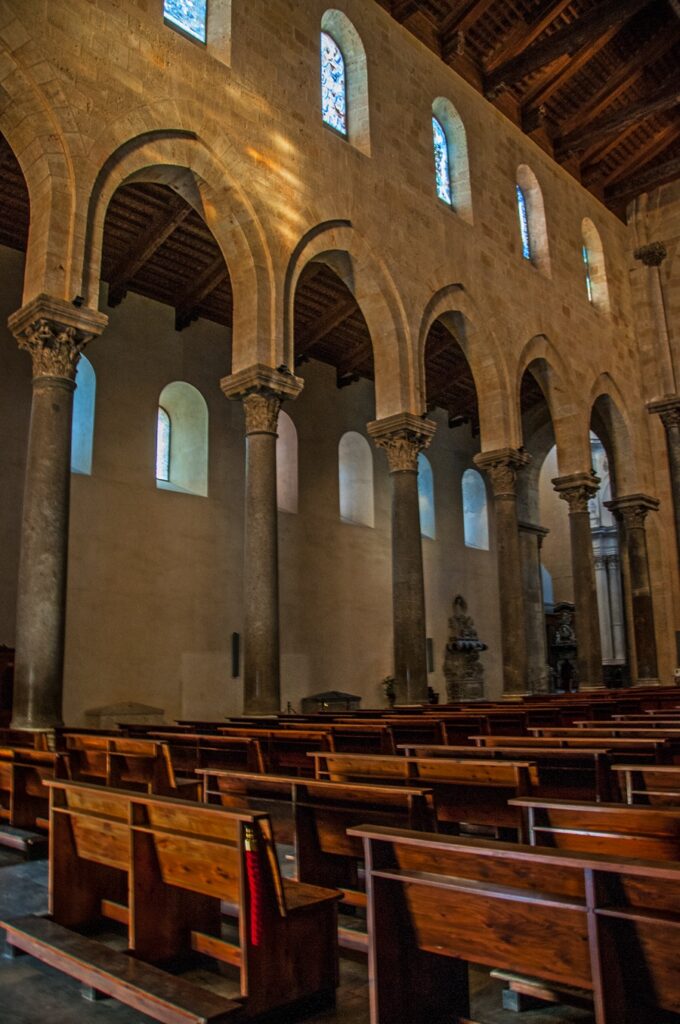A place of experimentation in the late Romanesque age, closely linked to the monumental buildings of the great European churches, the Cefalù Cathedral draws a definitive
dividing line
between the earliest phase of the architecture in Norman Sicily. Entering Roger’s Temple, a path leads up from the
porta regum
to the
apsidal basin
, where we are enveloped by an east-facing basilica-like space with a
Latin cross plan
.
The atmosphere is charged with
symbolic elements
, inviting us to embark on exodal path from darkness to light, religiously represented by Christ’s
Parousiastic return
through the anticipatory
Altar of the Eucharist
.
The thickness of the walls, even of the rear elevation, seems to emphasise the desire to draw a definitive line between the spiritual space of the Cathedral and the material space of the outside world, where the only light entering is that coming from a multitude of windows. It caresses the architectural masses of the liturgical spaces through the vibrant modulation of the colours of the contemporary
stained-glass windows
, evocative of the mosaic ornamentation that was supposed to decorate
nave
, but was never produced.
